What is possibly the largest Dinosaur in the Soft Model line to date strides in with the 2020 Favorite lineup; how big and how accurate is it really?
Sauropods remain among the most iconic dinosaur groups; their sheer size, long necks, and often longer tails distinguish them from all other dinosaurs, as well as any extant animals. Of course, sauropods’ great size means any in-scale models and toys can easily become large and expensive, so the group doesn’t always get the same level of attention as the other popular dinosaur groups. No collection would be complete without the long-necks, though, so inevitably all the major brands try their hand with at least a few of the most famous genera. Favorite Co. Ltd., having previously released soft model and vinyl model figures of Apatosaurus and Brachiosaurus, chose to add a third sauropod genus to their selection in 2020 with the famously lengthy Diplodocus.

The Favorite Soft Model Diplodocus is, not surprisingly, one of the largest models in their dinosaur collection, measuring about 38.5 cm (15.25 inches) long, not including curvature in the end of the tail. Even at this length, the model fits within the scale of 1:62 to 1:67, well below the standard scales which most major dinosaur toy brands produce their models in. Most of this length, of course, consists of the model’s long neck and even longer tail, which stretches out about as far and thin as the designers could probably push the sculpt before it became too fragile. Sometimes, I think we can take for granted just how extraordinary sauropod proportions could be.
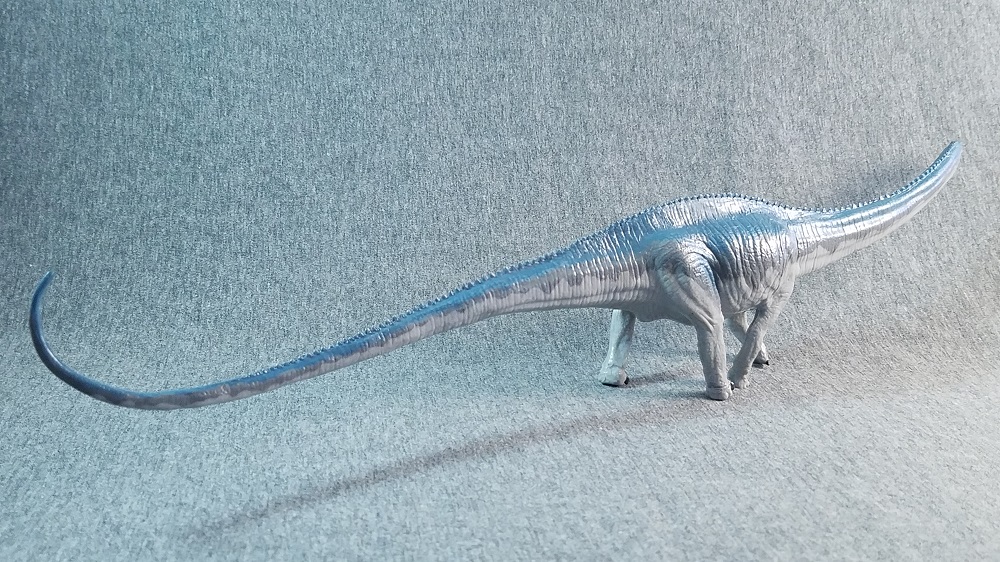
When eyeballing skeletals for comparison, the soft model looks pretty accurate to our current understanding of Diplodocus’s anatomy, with a couple of possible exceptions. Proportions of the neck and tail seem sound, although (as previously noted) the tail could potentially be even longer if the plastic material would permit it. The skull features nostrils set at the tip of the snout, rather than on top in front of the eyes; nostril placement in sauropods remains a subject of debate in the scientific community. The front and hind feet, meanwhile, have the correct number of padded toes and exposed claws. The skull appears a bit horse-faced with its front teeth bared – I’m not sure if the model is meant to be lipless or just in the process of opening its mouth – as well as in the slope of the snout. I would, however, chalk up the latter detail to the addition of soft nasal tissue filling out the skull’s shape.
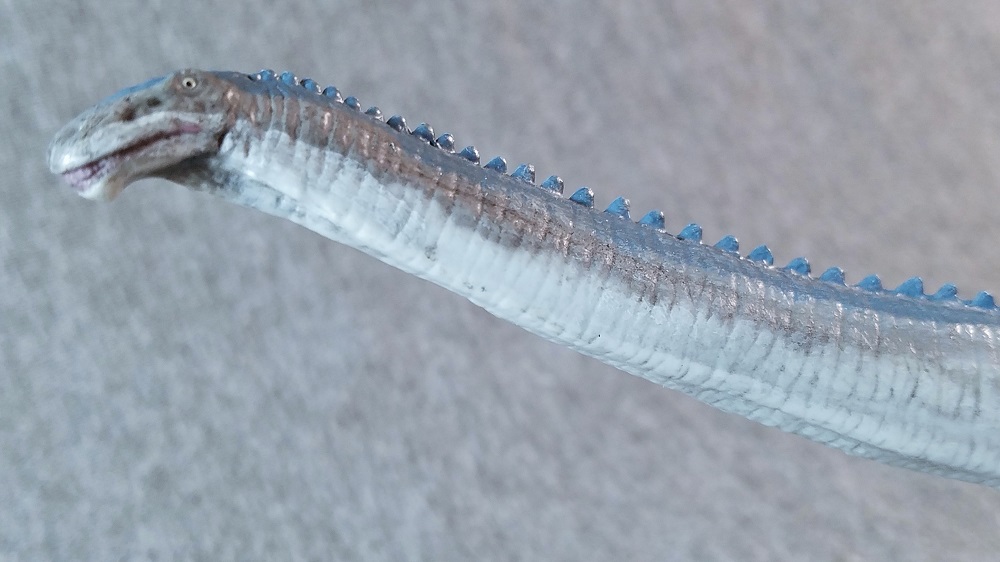
Surprisingly, although the model overall appears fairly lean and slender, it doesn’t seem to be as grossly shrink-wrapped in the manner many of the Soft Model figures sculpted by Kazunari Araki tend to be. Massive supporting tendons bulge from the sides of the neck, and the shoulders and hips poke out from the front and back of the main body, but there are no sunken ribs or vertebrae visible. The base of the neck and tail are given deep musculature for support, and the neck is relatively wide compared to the skull, reminiscent of reconstructions for the closely related Apatosaurus. Some recent studies suggest this might actually be a generous portrayal for the slender sauropod, but I think it’s nice to see a Favorite model a little more fleshed out in some areas. There’s still room for improvement, though, as some fenestrae on the skull and bones in the hindlimbs remain more visible than is probably necessary.
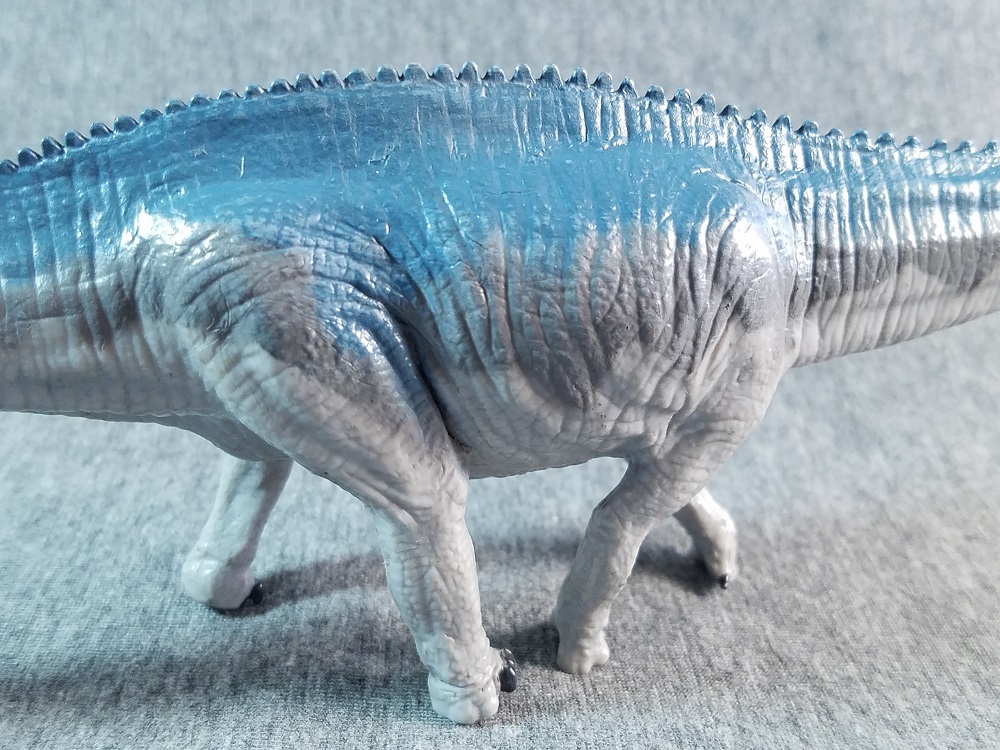
A row of uniform spines runs down the length of the model’s body, terminating about 3/4 of the way down the tail. Many reconstructions of Diplodocus have included these keratinous spines since the 90s, following a few discoveries of specimens with evidence of these features preserved in the fossil remains. Although these specimens are no longer associated with Diplodocus directly, they’re still from closely related genera, so it’s reasonable to think that Diplodocus may have had similar structures. Scale impressions also exist for some Diplodocus species, but they are so small that including them on this model would require great exaggeration; instead, the model bears a more elephantine texture of creases and wrinkles. It’s a cliche choice, but it looks alright here. Perhaps this model could be representing an older and more worn individual.
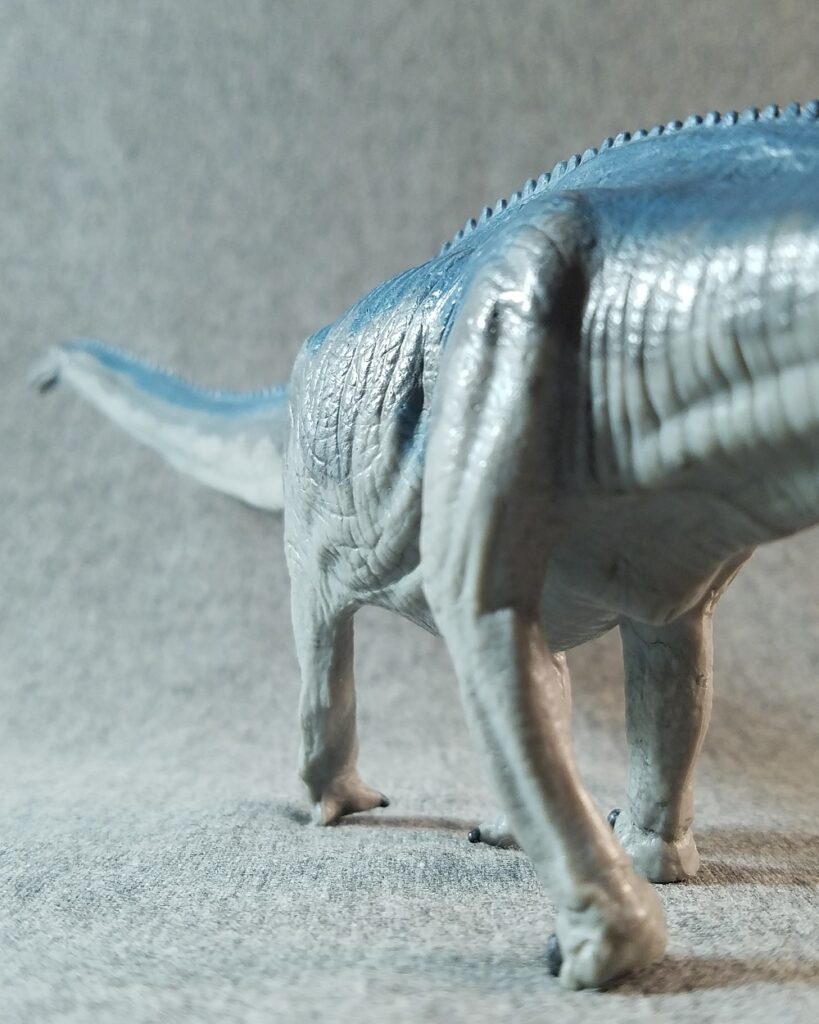
The model’s torso is well-rounded, appropriate for the digestive gut of a large herbivore. Curiously, the anterior end of the rib cage from the dorsal view appears broader than the posterior, which contradicts some skeletal reconstructions I’ve seen where the torso widens towards the hind legs. The model is posed in a casual stride with its tail flicking upward and its head slightly raised. There have been multiple debates over the years regarding what range of flexibility sauropod necks had, and what positions would have been the most natural for the creatures, so Favorite has gone with what could probably be considered the conservative route for the time being with this model.
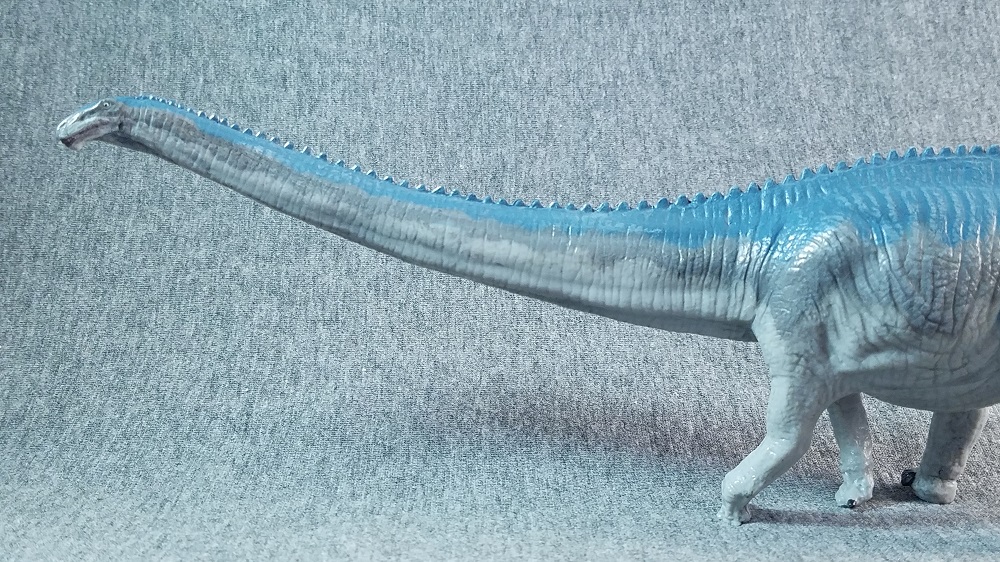
Coloration is simple for this model: a tricolor light and dark grey with light blue runs from nose to tail, with pinkish highlights to the gums, finely painted miniscule yellow eyes, and black toe claws. Animals as large as Diplodocus might not have needed bright or complex colors, so the soft model once again takes a conservative approach which contrasts almost humorously with some of their gaudier models. The color scheme is applied rather well, and some additional grey washing emphasizes the texture along the back and flanks. A slight glossy finish is also applied to the model, which is standard for Favorite’s figures (although I personally don’t care for it). My primary criticism would be towards the ugly dark pink applied to the exposed teeth, which makes the animal look bloody in the mouth.
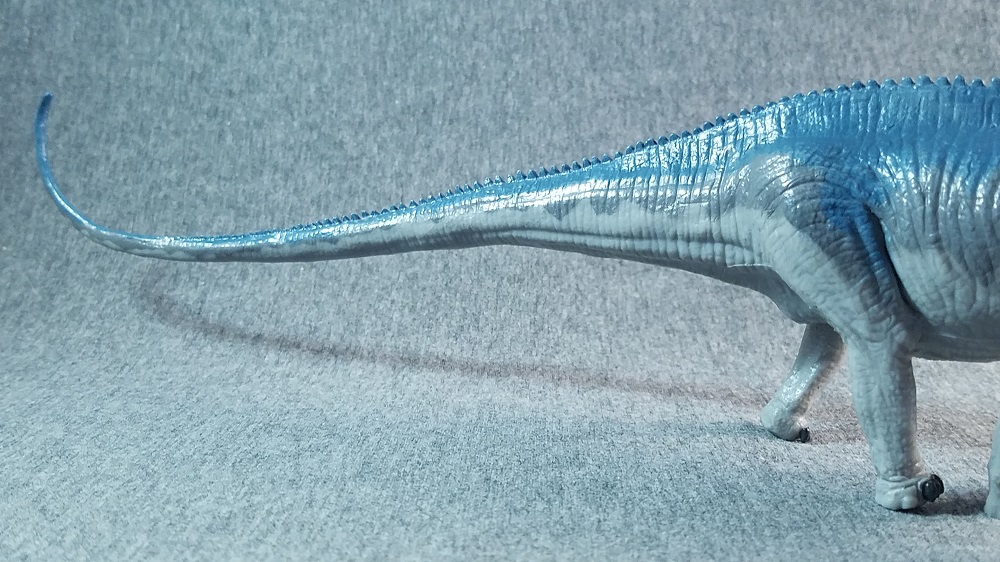
Although Eofauna’s upcoming figure will likely overshadow most of its contemporaries very soon, Favorite’s Soft Model Diplodocus is a fairly solid representation, which has decent shelf presence without being truly giant. It’s certainly nice to have more big sauropods on the market, and at a reasonable price range. Of course, the latter point will depend on when and where you can find this model, as there are few Western retailers who carry it. My best advice at the time of this writing is to order directly from Amazon Japan, as long as you won’t get gouged by shipping.
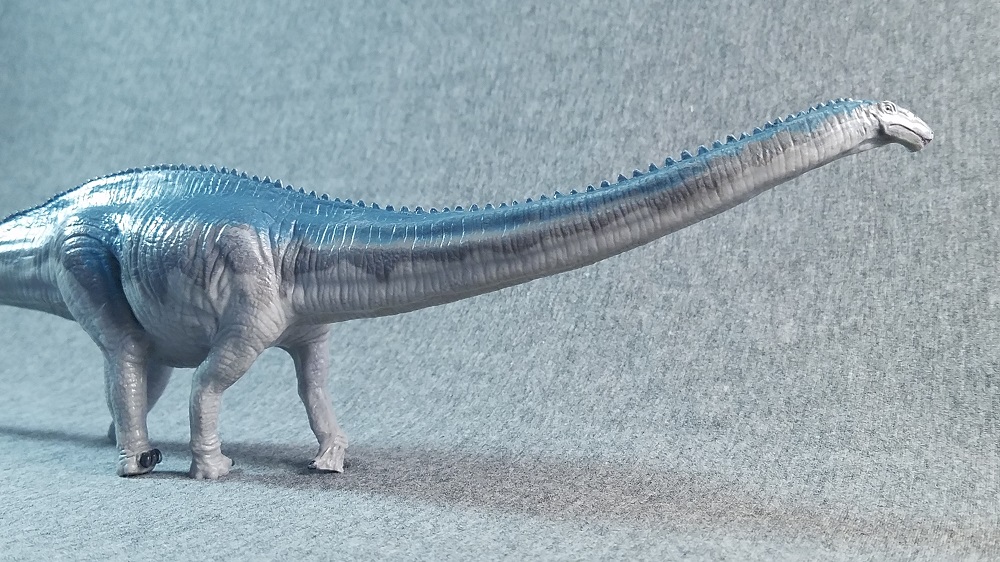
Disclaimer: links to Ebay and Amazon on the DinoToyBlog are affiliate links, so we make a small commission if you use them. Thanks for supporting us!




Nice review of this model. I have wanted to add it to my collection but the difficulties trying to acquire it, not to mention the price, made me gave up. It would be interesting to see it with the other models from the series.
Nice review as always. 38.5 cm is pretty small, it’s impressively detailed for that size. All the same, I like my sauropods hefty, so I’m holding out for the EoFauna version due out next year.
Fairly decent model, well sculpted but as stated in the article (and I agree) the colors of the diplodocus are a bit unfortunate, however it is an acceptable figure although for me its tambatitanis or the brachiosaurus from the same Favorite factory is better.